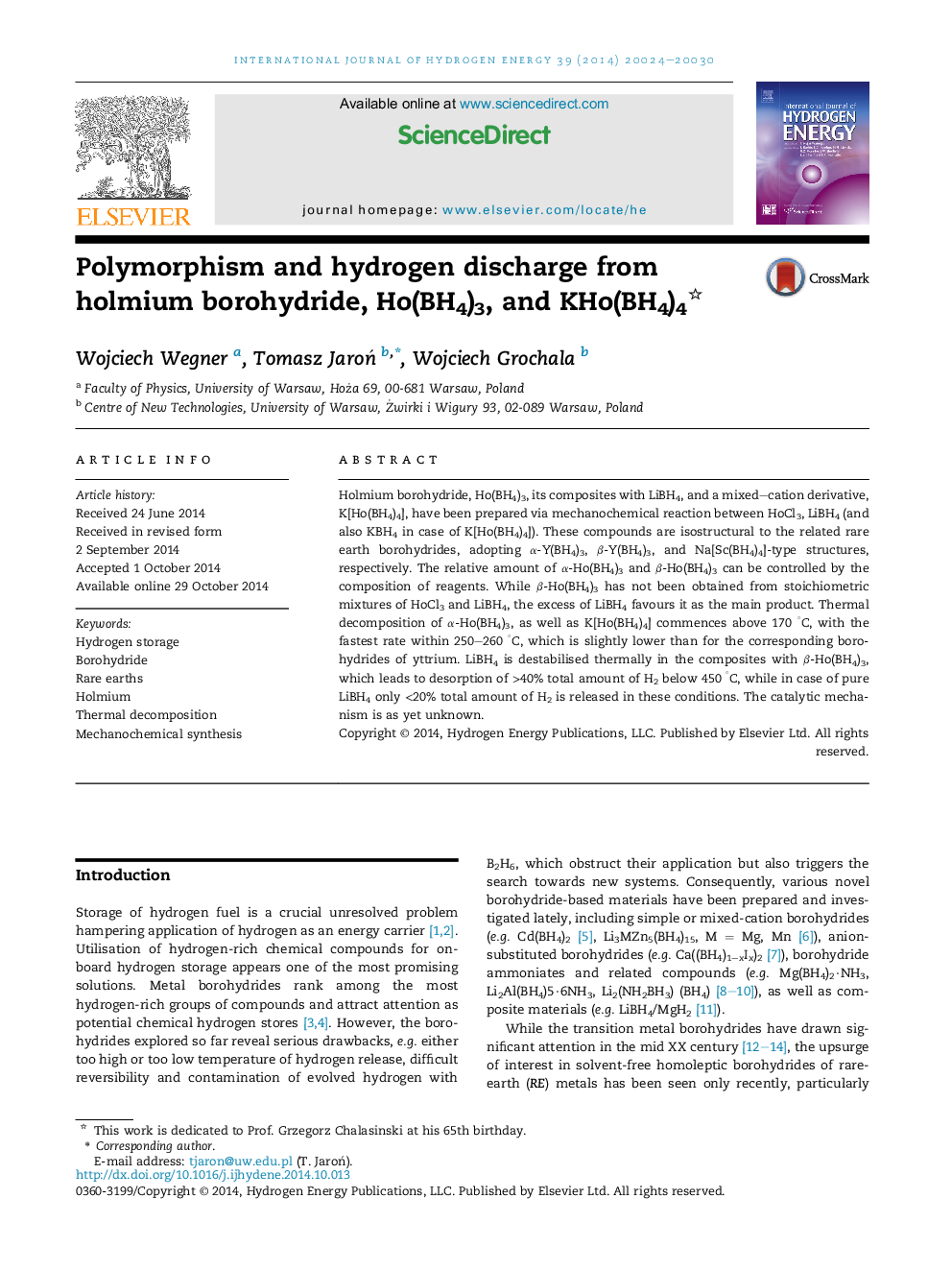| Article ID | Journal | Published Year | Pages | File Type |
|---|---|---|---|---|
| 7717384 | International Journal of Hydrogen Energy | 2014 | 7 Pages |
Abstract
Holmium borohydride, Ho(BH4)3, its composites with LiBH4, and a mixed-cation derivative, K[Ho(BH4)4], have been prepared via mechanochemical reaction between HoCl3, LiBH4 (and also KBH4 in case of K[Ho(BH4)4]). These compounds are isostructural to the related rare earth borohydrides, adopting α-Y(BH4)3, β-Y(BH4)3, and Na[Sc(BH4)4]-type structures, respectively. The relative amount of α-Ho(BH4)3 and β-Ho(BH4)3 can be controlled by the composition of reagents. While β-Ho(BH4)3 has not been obtained from stoichiometric mixtures of HoCl3 and LiBH4, the excess of LiBH4 favours it as the main product. Thermal decomposition of α-Ho(BH4)3, as well as K[Ho(BH4)4] commences above 170 °C, with the fastest rate within 250-260 °C, which is slightly lower than for the corresponding borohydrides of yttrium. LiBH4 is destabilised thermally in the composites with β-Ho(BH4)3, which leads to desorption of >40% total amount of H2 below 450 °C, while in case of pure LiBH4 only <20% total amount of H2 is released in these conditions. The catalytic mechanism is as yet unknown.
Keywords
Related Topics
Physical Sciences and Engineering
Chemistry
Electrochemistry
Authors
Wojciech Wegner, Tomasz JaroÅ, Wojciech Grochala,
